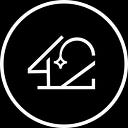Graphic design has many elements, so it is imperative to stay organized and have a defined plan. The best approach to structuring your plan to achieve stellar results is creating a graphic design workflow. If you have a graphic design workflow in place, it implies that you are familiar with your client and audience’s expectations from the start. It allows product visualization that provides a possibility for the client to suggest changes from the get-go. In this article, you will find useful tips for a more effective workflow and more satisfied clients.
Brief
It is crucial to understand the scope of the project and the expected outcome, the brief of a project will help you achieve that. A good brief helps prevent confusion and errors, and here are the elements your brief has to include:
- Customer’s company information
- Customer’s brand guidelines
- Target audience
- Type of product
- Roadmap
- Budget
- References and inspirations
Research
Inform your brief by thorough research. When you conduct research, you collect valuable information to assist you. It allows you to understand the needs of your target audience and informs the design process. When graphic designers understand their audience, they come up with valuable and relevant designs. A great way to conduct research is by reviewing the designs of your competitors. Check also what your target audience engages with on social media channels. Once you have conducted your research, it is time to apply it to the project to get enhanced results.
Brainstorming and Moodboard
You should already know what your target audience is and what your client wants, as the outline and research are complete by this stage. The next step is to brainstorm ideas to make the magic happen. Create a moodboard to get the creative juices flowing: it is a collection of graphics that helps you process the outline and turn ideas into the end product. It is easier to see what the final result should look like when you visualize the outline in front of you. Also, moodboards facilitate easier collaboration. If you work in a team, its members can consult the moodboard at any time they need a direction. Moodboards allow the client to visualize the end product. If they disagree with what appears on the moodboard, they can suggest changes before you deliver the final version of the project.
Sketch
The next step in the graphic design workflow is a rough sketch of your ideas. These sketches can be drawn either by hand or on your computer. Many designers give preference to sketching by hand because this way, they are less distracted, although it does not matter. Use your moodboard as an inspiration and guidance. At this stage, you should not worry too much about the detail. These sketches are mainly meant to prompt ideas rather than create the final version.
Changes
Even if you are a seasoned professional, you will be required to make changes according to the feedback you receive; it is an essential part of the graphic design workflow. However, first, make sure that the criticism you receive is constructive and high-quality. It is also important to assess if the suggested changes can be done within the timeframe established in the outline. It is recommended to wait a couple of days before implementing changes according to your client’s feedback. It is because people tend to change their opinions after they reconsider things over again. If your client is one of these people, you will end up making changes to the design several times if you change the design right away. Ask your client for confirmation, and if they ask you to continue with the changes, adjust the design accordingly. Keep in mind the deadlines, and avoid turning in the project late.
Final version
Not that you are ready, you can proceed to the final stage of the graphic design workflow: providing the final version. Rely on your sketches; this stage is not meant for experiments. Ensure that you have addressed the guidelines mentioned in the outline. In addition, verify if the project is appropriate for the customer format. Now you can present your design!
